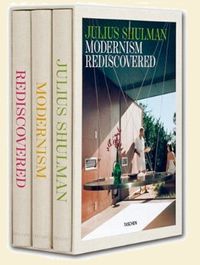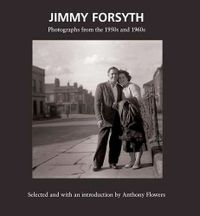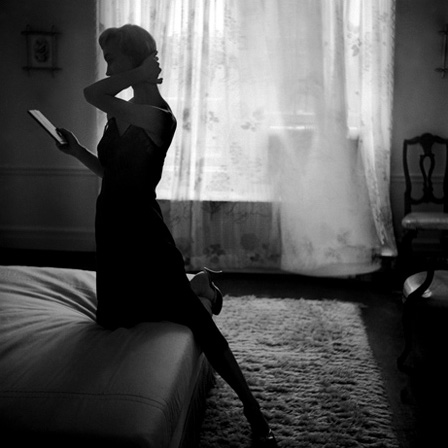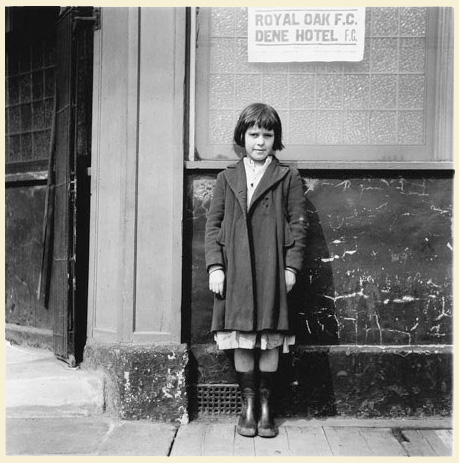Julius Shulman, who died two days ago at an advanced age after a full life, is one of those photographers who are well known in their sub-speciality but not as well known among the general public—including, even, photography enthusiasts. Mr. Shulman is probably better known among architects than he is among photographers.
 For a little more background: we were tipped off by reader Allan Connery to a video of Calgary architect John Brown giving a virtual tour of Pierre Koenig's Stahl House. The Stahl House was the subject of Julius Shulman's most famous photograph, a picture that came to define mid-century Los Angeles modernism. And here's a link to information about the award-winning film about Schulman, "Visual Acoustics," compliments of reader Rodney Dean.
For a little more background: we were tipped off by reader Allan Connery to a video of Calgary architect John Brown giving a virtual tour of Pierre Koenig's Stahl House. The Stahl House was the subject of Julius Shulman's most famous photograph, a picture that came to define mid-century Los Angeles modernism. And here's a link to information about the award-winning film about Schulman, "Visual Acoustics," compliments of reader Rodney Dean.
Shulman published or was a party to dozens if not hundreds of books. A Constructed View: The Architectural Photography of Julius Shulman (here's the U.K. link
) gives an excellent introductory overview of his work, a brief biography, and useful information about architectural photography in general. For a more
forthrightly nuts-and-bolts approach, there's a reprint available in the U.S. of his classic 1962 instructional book Photographing Architecture and Interiors
. The latter deserves a place in the library of any aspiring architectural photographer, but it's no longer a good basic introduction to techniques and it won't be the place to go for things like advice on lighting equipment. Mined for more of a holistic approach to a career and a subject by those who wish to know more about Shulman's thinking and methods, however, the title still has a lot to offer, even to generalists. Those who want a more comprehensive survey of Shulman's work will want to seek out Taschen's three-volume Modernism Rediscovered, a treasury of pictures selected from the quarter-million negatives Shulman donated to the Getty Research Institute when he retired in 2004. The book is available in the U.K.
but doesn't seem to be in print in the U.S. (It shouldn't be that hard to find if you dig a bit, though.)
A couple more accomplished but lesser-known photographers who've belatedly been getting a little attention recently:
 Jimmy Forsyth , also recently deceased, was a methodical documentarian of the "Geordies" of Tyneside (in the Northeast of England). A lifelong Socialist, he was blind in one eye, described as "a single man who was often lonely," and he created his work mostly living on "the meager resources of the dole" (what Americans would call welfare). Ironically, his last book, the very inexpensive Jimmy Forsyth: Photographs from the 1950s and 1960s
Jimmy Forsyth , also recently deceased, was a methodical documentarian of the "Geordies" of Tyneside (in the Northeast of England). A lifelong Socialist, he was blind in one eye, described as "a single man who was often lonely," and he created his work mostly living on "the meager resources of the dole" (what Americans would call welfare). Ironically, his last book, the very inexpensive Jimmy Forsyth: Photographs from the 1950s and 1960s, was published only a few weeks ago in June (the link is to Amazon U.K.; Amazon U.S. doesn't seem to have this title sorted yet). The obituary at The Guardian is a vivid and charming glimpse into the life of a man who must have been "a character."
Elderly but still thriving, the once and future fashion photographer and classically free-spirited bohemian Lillian Bassman was the subject of a delightful short profile in The New York Times yesterday, written by Ginia Bellafante. The story of her onetime repudiation of photography and her discovery of Photoshop in old age is fascinating, as are the details of her independent life (I was especially touched by the brief description of her lifelong romance, from age 6 till death did the two part).

Lillian Bassman, from the upcoming book Women
She's also the beneficiary of a new retrospective, upcoming from Abrams. Called simply Lillian Bassman: Women, it's only available for pre-order at the moment. The new book, says the publisher, will have "more than 140 of her best images reproduced in stunning tritone, including many never published before and others not seen since they appeared in the pages of the legendary Harper's Bazaar of the 1950s." Much anticipated by fans of fashion photography, Lillian Bassman: Women is expected by October 1st.
Mike
(Thanks to those mentioned, Ade Rixon, Roger Suppona, and all those who sent the Bassman link)
Featured Comment by Carl Weese: "As mentioned in the Times article, Ms. Bassman has a show of her prints opening tomorrow afternoon (Saturday 7/18) at KMR Arts Gallery in Washington, Connecticut. I understand the artist is planning to attend."




Thank you for those. Bassman made some wonderful photographs. Both interesting characters.
Another unknown-to-me (and quite eccentric) photographer was small town portraitist Mike Disfarmer, unknown at least until guitarist Bill Frisell produced an album inspired by his work, as noted on NPR's photo blog:
http://www.npr.org/blogs/pictureshow/2009/07/disfarmer.html?ft=1&f=97635953
Posted by: robert e | Friday, 17 July 2009 at 04:19 PM
Mike
Thanks for highlighting Jimmy Forsyth. I'll definitely check that book out.
A friend of mine was a big fan of Lillian Bassman's and used to visit her, back in the '90s. In a word, feisty!
Posted by: Andrew Lamb | Friday, 17 July 2009 at 04:43 PM
Jimmy Forsyth has been an inspiration to me since I first saw his work at the Side Gallery in Newcastle back in the 80’s. If ever there was a photographer who proved that it is not about the camera, he was it. Whenever I get new equipment lust, or start pixel peeping, my antidote is to take out my copy of ‘Scotland Road’, admire the photographs, and read his account of how he got started in photography (‘I wasn’t looking for fancy shades, I was just taking what was there, the things I was interested in and the things I liked, and tried to make them look real’). Only one eye, but what an eye!
Posted by: Iain Dawson | Friday, 17 July 2009 at 07:45 PM
Since this blog is a virtual rats' nest of intellectuals, we'll have a test: in which other-worldly movie, made in the last ten years, was the Stahl House featured? No Googling.
JC
Posted by: John Camp | Friday, 17 July 2009 at 08:25 PM
I'd add Marjorie Content to the list. She died in 1984, and Jill Quasha retrieved many of her images and produced a lovely small book. Her work is simple but well seen and crafted, somewhat like Stieglitz, whom she knew along with O'Keeffe.
Jeff
Posted by: Jeff | Friday, 17 July 2009 at 09:58 PM
Mike,
great to read about Jimmy Forsyth in your column, but a slight correction is due - it's 'Tyneside' or 'Tyne and Wear'. The BBC local news ran his obituary the other day, with footage of him as an old man, shuffling through Newcastle with a compact 35mm of some sort in his hand. I must order that book now.
Jeff (in North Shields, Tyne and Wear)
Posted by: Jeff Wilson | Saturday, 18 July 2009 at 02:53 AM
A minor point. In the introduction to Jimmy Forsyth you mentioned the "Geordies" of Tyneside & Wear. The people from around the river Wear would be very unhappy to be referred to as "Geordies" they are "Maccams". I lived for awhile when a student just to the North of the Scotswood road, by then they area was so scarred by unemployment and "improvement" that crime and violence were rife and I found little sense of community but when I got a job in the local hospital (as a part time records clerk) the humor, sense of fun and spirit of the Geordies were revealed and I had a wonderful time. Thanks for the pointer for the book
Gavin
Posted by: Gavin McLelland | Saturday, 18 July 2009 at 05:24 AM
Thanks for the heads up on Jimmy Forsyth. I love good documentary style photography, especially from the early-mid 1900s.
Posted by: John Roberts | Saturday, 18 July 2009 at 05:48 AM
After my first comment I searched around for Jimmy Forsyth and found the amber films site
http://www.amber-online.com/exhibitions/scotswood-road?p=1
Which has 33 of the photographs from the "Scotswood Road" show.
Mike you might like no. 12 along with Jimmys comment.
Gavin
Posted by: Gavin McLelland | Saturday, 18 July 2009 at 09:39 AM
One answer, at least, is GalaxyQuest.
Posted by: Robert | Saturday, 18 July 2009 at 11:00 AM
A wild guess for JC: Galaxy Quest?
I seem to recall seeing the Stahl House, or at least houses a lot like it, in several movies. (btw, is it correct to pronounced it to rhyme with "doll house"?)
Posted by: robert e | Saturday, 18 July 2009 at 11:22 AM
Lillian Bassman's work blows me away.
Posted by: hookstrapped | Saturday, 18 July 2009 at 11:45 AM
It should be noted that while Lillian Bassman was working as a designer with Brodovitch, she laid out many of the designs which he laid claim to. Her role in magazine design and art direction is not as well known because she worked under such a domineering figure like Brodovitch, then switched to photography, and then left it all.
http://www.stepinsidedesign.com/STEPMagazine/Article/28555
Posted by: Mike | Saturday, 18 July 2009 at 12:50 PM
A quarter-million negatives? Did I hear you right? Easy enough in digital, but in film....
Posted by: Andrew Kirk | Saturday, 18 July 2009 at 05:29 PM
The Getty Museum had a great Julius Shulman exhibition a few years ago. There's an interesting audio sample where he describes the making of the famous photo of Koenig's Case Study House #22.
Posted by: Joe Reifer | Saturday, 18 July 2009 at 10:44 PM
I'll take a shot at that JC. the movie was "Galaxyquest".
Posted by: john robison | Saturday, 18 July 2009 at 11:06 PM
I enjoyed reading and viewing the material on Julius Shulman. Thanks!
Posted by: Rod S. | Monday, 20 July 2009 at 08:52 AM